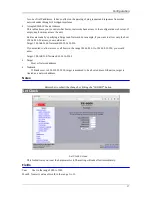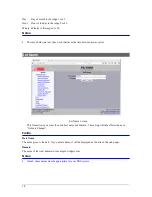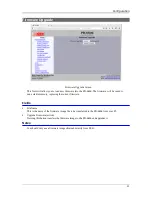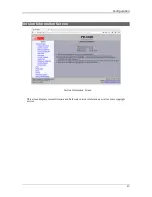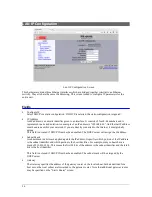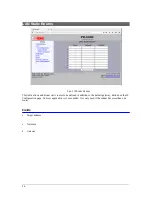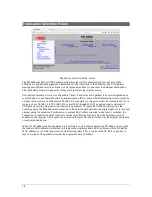
Configuration
Configuration Process Examples
Example 1:
Make configuration changes, test them with Activate, then save them with Save.
This is the most commonly used method for changing the configuration. It allows you to test the
configuration prior to saving it. If, during the testing, you notice an abnormality; you can reset the
hardware to return to the last good configuration.
Example 2:.
Make configuration changes, save them, reset the hardware to activate the change
s.
This method allows one to configure thePR-6606 via an IP network that will not work using the new
configuration. Make the changes to the pending configuration and save them. Your current session will not
be affected, but when the hardware is next powered on, it will begin using the new configuration. This
method is useful when you are configuring to use a new LAN address range while still on the old LAN.
Example 3:
Transfer a saved configuration, save it, reset the hardware to activate the changes.
It is useful to transfer an existing configuration to a PC text file for future use. Then if the hardware must
be replaced, simply transfer that stored configuration to the new hardware.
If the PC is in the default IP address range of the new hardware (192.168.0.x subnet), then a new,
out-of-the-box unit is easily configured using this method. Start the hardware on the LAN, transfer a
stored configuration file from the PC, and store it. When restarted, the PR-6606 will have the proper
configuration.
Saved Configuration Files
The saved configuration file is a simply formatted raw text file. Advanced users may wish to edit this file
using an appropriate text editor, then transfer the changed configuration to a different unit.
Use care when performing configuration with this technique as the text configuration file must be in the
proper format.
This method is ideal for automating the configuration of many units in a large corporate environment.
13



















